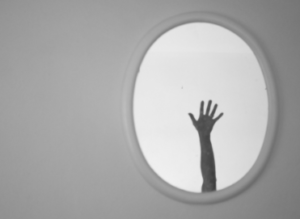
Listen to Mathu read this post!
Symmetry occurs when an object or living thing has two halves that look exactly the same. Learning about symmetry at an early age helps children master more complex mathematical – and, specifically, geometric – concepts later in life. The following play-based activities give children opportunities to explore different kinds of symmetry.
Making a Face with Loose Parts
Human and animal faces are symmetrical, and are, in fact, some of the first examples of symmetry that babies learn to recognize. Provide a child with loose parts like pom poms, popsicle sticks, feathers, and pipe cleaners and ask them to make faces. Note that children should be supervised when they are using small items.
Painting Butterflies
In this classic preschool activity, children cut out the shape of a butterfly from construction paper and paint on one wing. They then fold the butterfly in half, press, and unfold to make two identical wings. Another way to try this is to fold a paper towel or a coffee filter in half and to use water color to paint the top half. The water color will bleed through, creating two identical wings.
Mirror Play
Set up a standing mirror or allow children to play near a mirror that is already mounted on a wall. Encourage them to place the objects in front of the mirror and to notice the way the reflections. Allow children to experiment with objects like blocks and tiles, and with natural objects like leaves, rocks, and pinecones to make symmetrical patterns and structures. Note that children should be supervised when they are playing near glass.
Papel Picado
This traditional Mexican craft is a wonderful way to teach children about symmetry, shapes, and patterns. Fold a piece of tissue paper multiple times, until you have a layered square. Provide children with scissors and allow them to cut along the folds. When they unfold the paper, they will see symmetrical shapes they created. When they’re finished, children can hang the tissue paper banners on a string or piece of yarn and hang them up as decoration. Check out the Denver Botanical Garden’s youtube channel for instructions in English and Spanish.
 Go on a Symmetry Walk
Go on a Symmetry Walk
Go for a walk outdoors and ask children to notice examples of symmetry. Leaves, flowers, butterflies, and even trees can be symmetrical. If possible, collect symmetrical objects and use them to make a collage when you return home.








